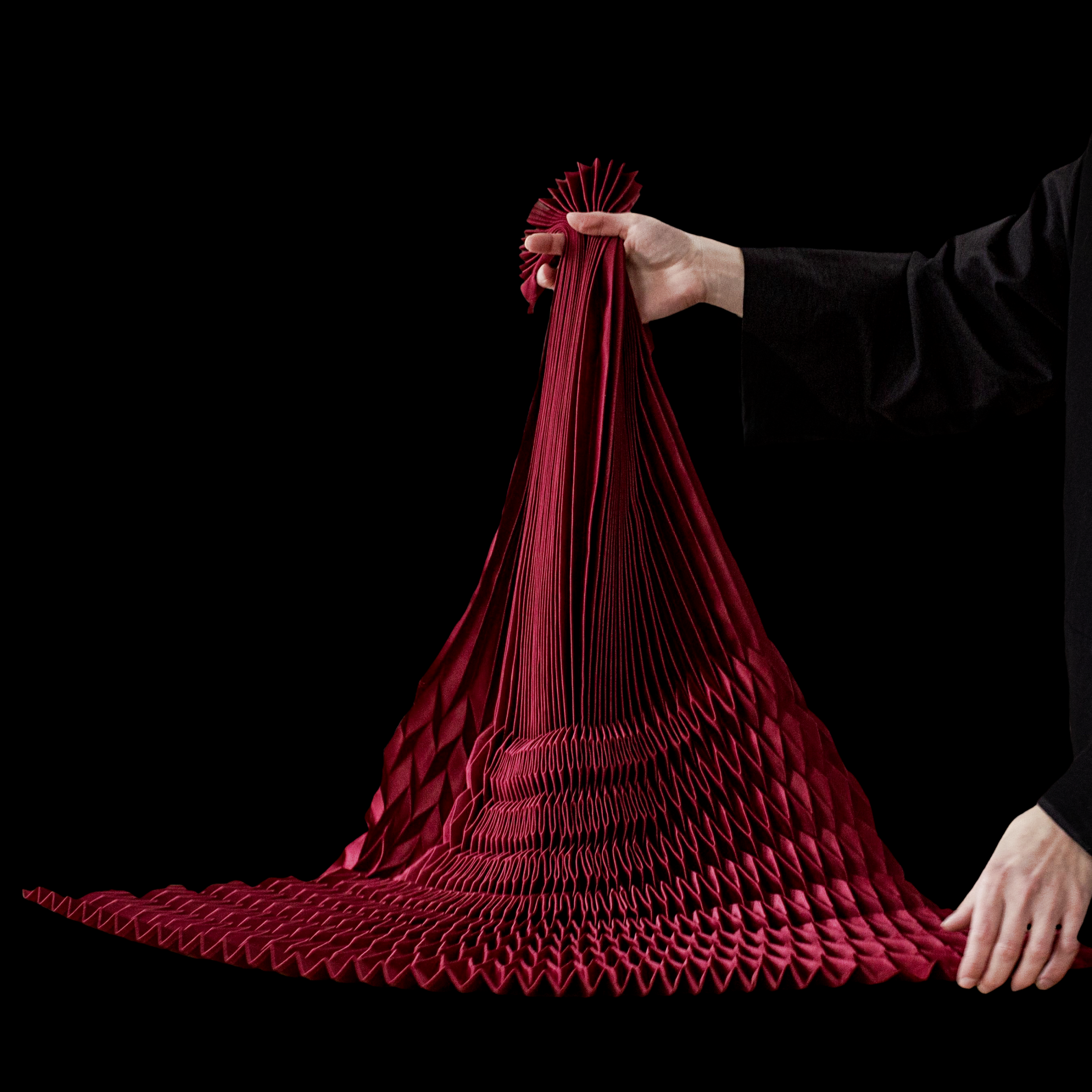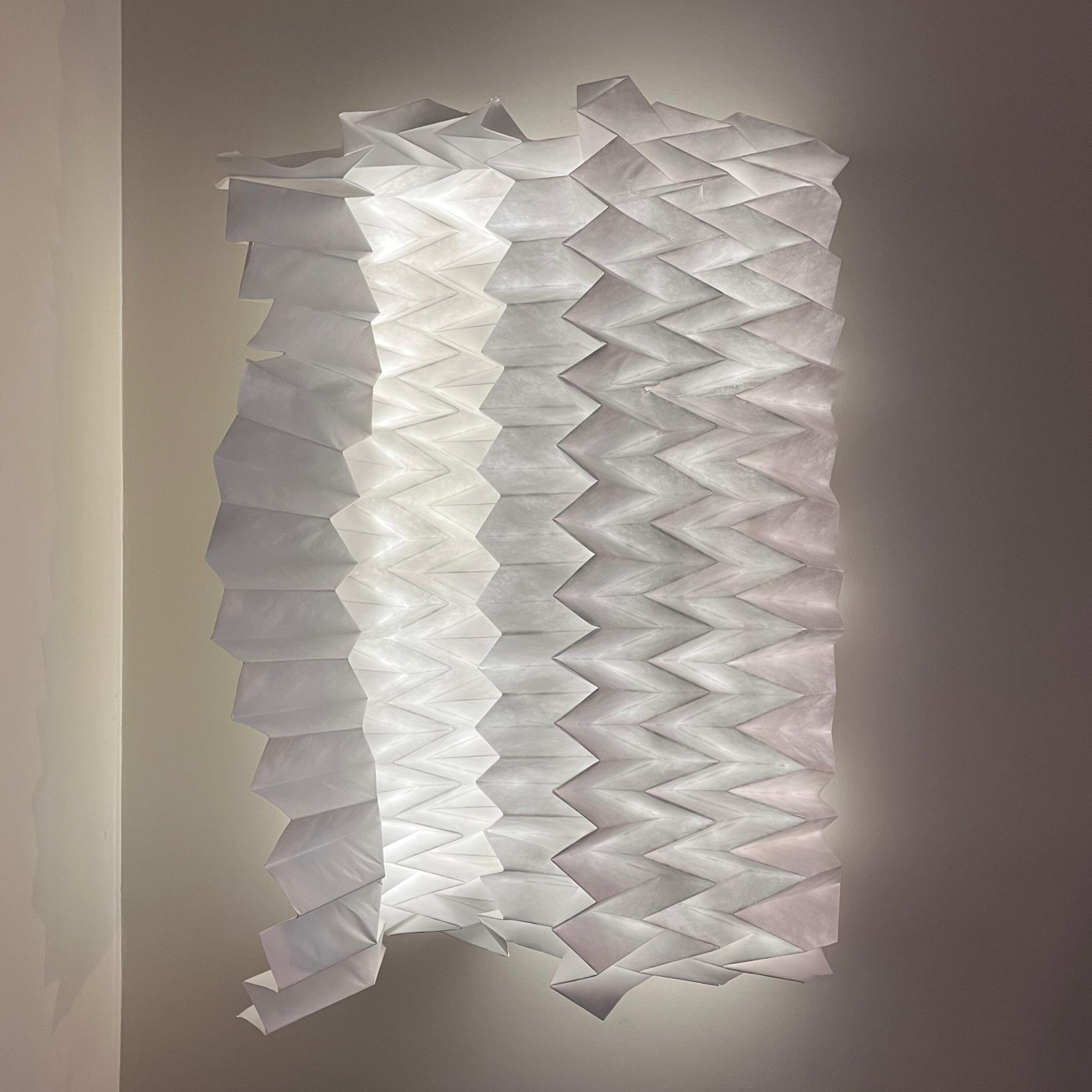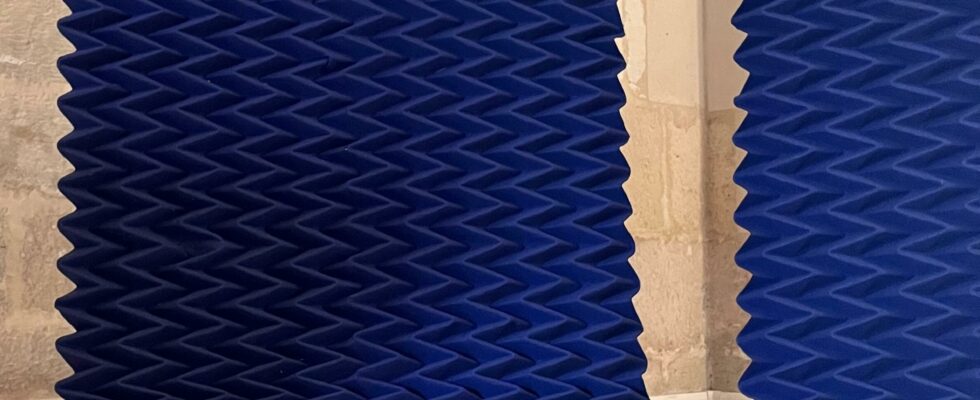ÊKÔ, of which Sarah Saint-Pol is the founder, is both a Maison d’Art Porté and a brand of clothing and accessories inspired by origami and made using exceptional know-how: artisanal pleating. But it is also a design office for professionals in the fashion, design and scenography sectors. Sarah Saint-Pol deploys the technique of pleating without limits of materials.
A creator or artisan, in general, creates all the time. Every moment of life, even private life, will give us an idea for another project. And it’s always somewhere in our head.
– Sarah Saint-Pol, designer and founder of ÊKÔ
“As I work a lot on French know-how, I said to myself: “IWe need a name that is both French and also evokes a little Japan“, because origami is originally a name that traces my journey as a musician. And finally, the echo, the sonic echo, also brings to mind the work of origami. There is a sort of echo, of repetition of the gesture. I say to myself: “I want something around echo, Eko with a K, that’s the Japanese name. “ »
Sarah Saint-Pol was born in the south of France. She studied classical music in Aix-en-Provence then in Belgium and the Netherlands. She began a career as a flautist in different philharmonic orchestras. During her career, she developed a jaw problem and was forced to stop playing music. She retrained thanks to training in cultural management, but she lacks a manual as well as creative dimension.
In her spare time, she creates origami on fabrics, which is how she discovered pleating. In 2018, she started by making a clothing collection, and since then, she has developed her activity around design. When she starts a collection or an object, she always starts with a paper prototype. “ I really like working with paper like origami. This is the basis of pleated work. I make lots of paper models. If it’s clothing, I’ll mold it around my mannequin to see how it fits. And it is from these models that I will build the pleating looms in order to construct the garment around this pleat on the garment or the wall work. »
Pleating looms
In order to create his pieces, Sarah Saint-Pol uses pleating looms. “ I make a loom. It’s like a paper mold that looks like origami. I make two layers, then I steam it so that it takes the shape and then I lay it completely flat again to be able to lay the fabric inside flat, without having any creases. I tighten it and put it in an oven. If the fiber of the fabric is synthetic, it will melt slightly. If it is a natural material, it will break the fiber and take the shape of the mold. When the mold is dry, after casing, the material is normally non-wrinkling. »

“ For synthetics, this will remain marked on the material. Also for leather because it is very rigid. Afterwards, when I work on linen or cotton, for objects that cannot be touched or washed, like lighting fixtures, we can make linen lighting fixtures because they are not going to be washed. If it is washed, the shape is lost. This is the case for cotton or silk clothing. It’s ephemeral, in fact. The pleating machines are made to measure each time. I can have very large looms. At the moment, I am working with a lighting designer and I am preparing a loom for her that is 7 meters long and 1.50 wide. I sometimes have small ones. To make a bag, I need a very small pleating machine. »
Train yourself
The profession of pleater almost no longer exists, Sarah Saint-Pol had to develop her own technique. “There is no training and there is no transmission. I myself was not able to train because when I showed up at the pleating workshops, I was a little naive and I told them:“I’m going to train because I want to create a brand of pleated clothing. “And that scared them and they all said to me:”No, we train apprentices to work with us, but we do not train outside.“I had to train myself, it’s not necessarily easy to learn a technique on your own. There are a lot of videos circulating online. Little by little, through watching, I end up understanding their technique and then I developed my own. What’s interesting is that I developed my own technique. »

“ It’s a technique that has existed for so long, but it’s protected by trade secrets, so we don’t really have the right to reveal everything either. Personally, I am really keen to train new generations of pleaters, because for the moment, there is no competition at all and as a result, the know-how does not evolve because when it does not There is no competition… If there are new pleaters on the job market, that will raise the level and in any case, there is demand. I see clearly that since I opened my design office, I have had a lot of requests, so there could be ten more of us, 50 more, there would always be work for us.»
Play with new materials
Sarah Saint-Pol likes to venture outside the fabric and apply pleating techniques to new materials like leather or even ceramics and wood. “Since I opened the design office, many designers, leatherworkers for example, have told me: “Oh dear ! I would love to have pleated leather, but it’s not possible.” Many pleaters have told me :“We can’t pleat leather, it’s impossible.” I said to myself “but why ?“I tested it, it’s possible. I had a lot of failures before understanding how to do it. Cowhide leather works very well, sheep leather too, but it remains a little too soft. You have to find the right material, the right treatment At the moment, I’m waiting for very, very fine wood that I’m going to try to pleat.»

“I have a lot of manufacturers who send me their material. I investigate regularly, I test ceramics or felt. A large part of my work is research on new materials that I get sent to me. Or I go see manufacturers. You just have to find the technique for each material, we can pleat everything. Often at Christmas, I make pleated shortbread or pleated chocolates. We can do whatever we want, you just need to be able to make a thin sheet and put it in a pleating machine to make it work. By finding the right temperature, everything works. I think that for each material, there is a way of doing things.»
Find all the episodes of 100% Création on:
Apple Podcast Castbox Deezer Google Podcast Addict Podcast Spotifyor any other platform via the RSS feed.
